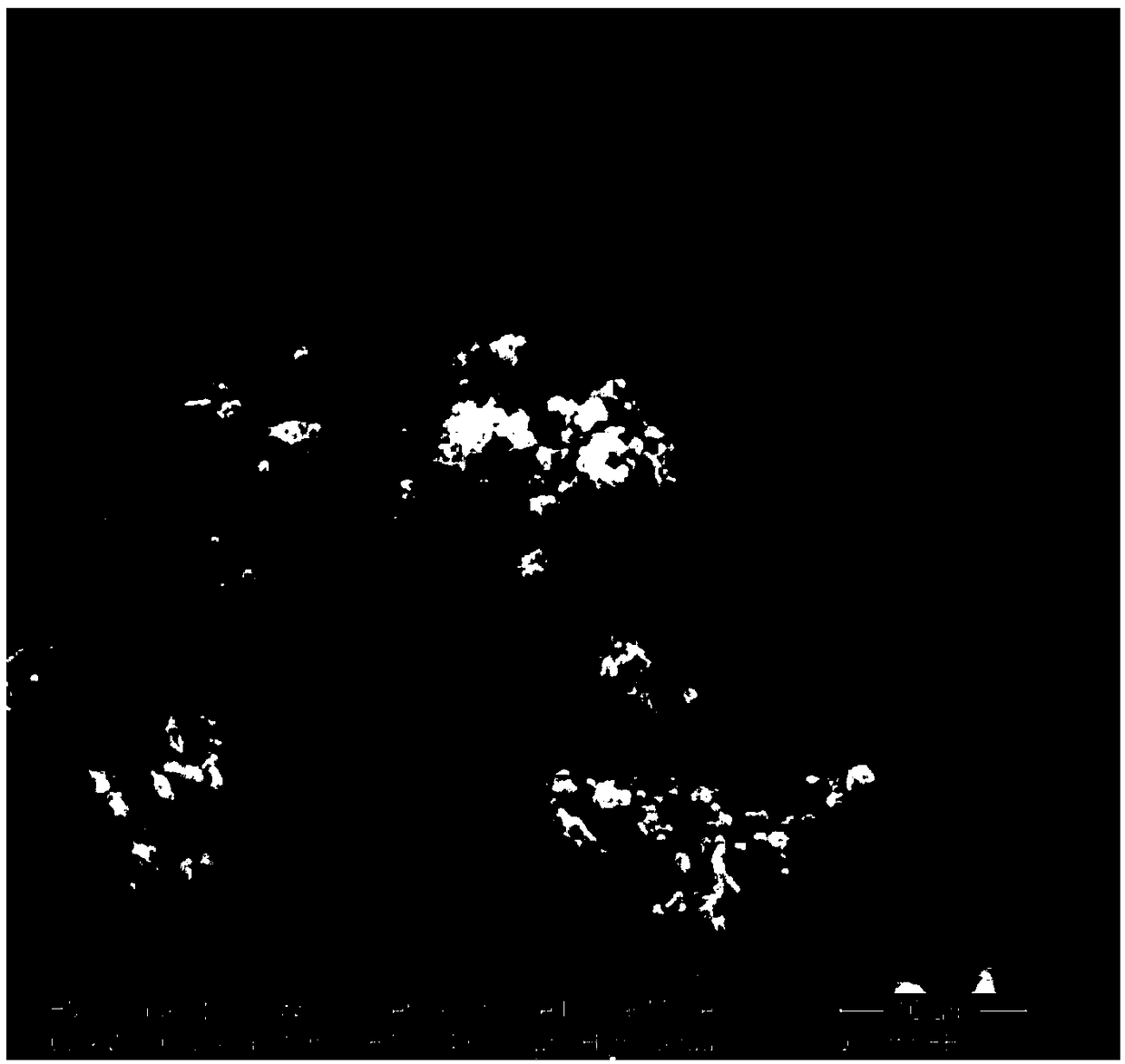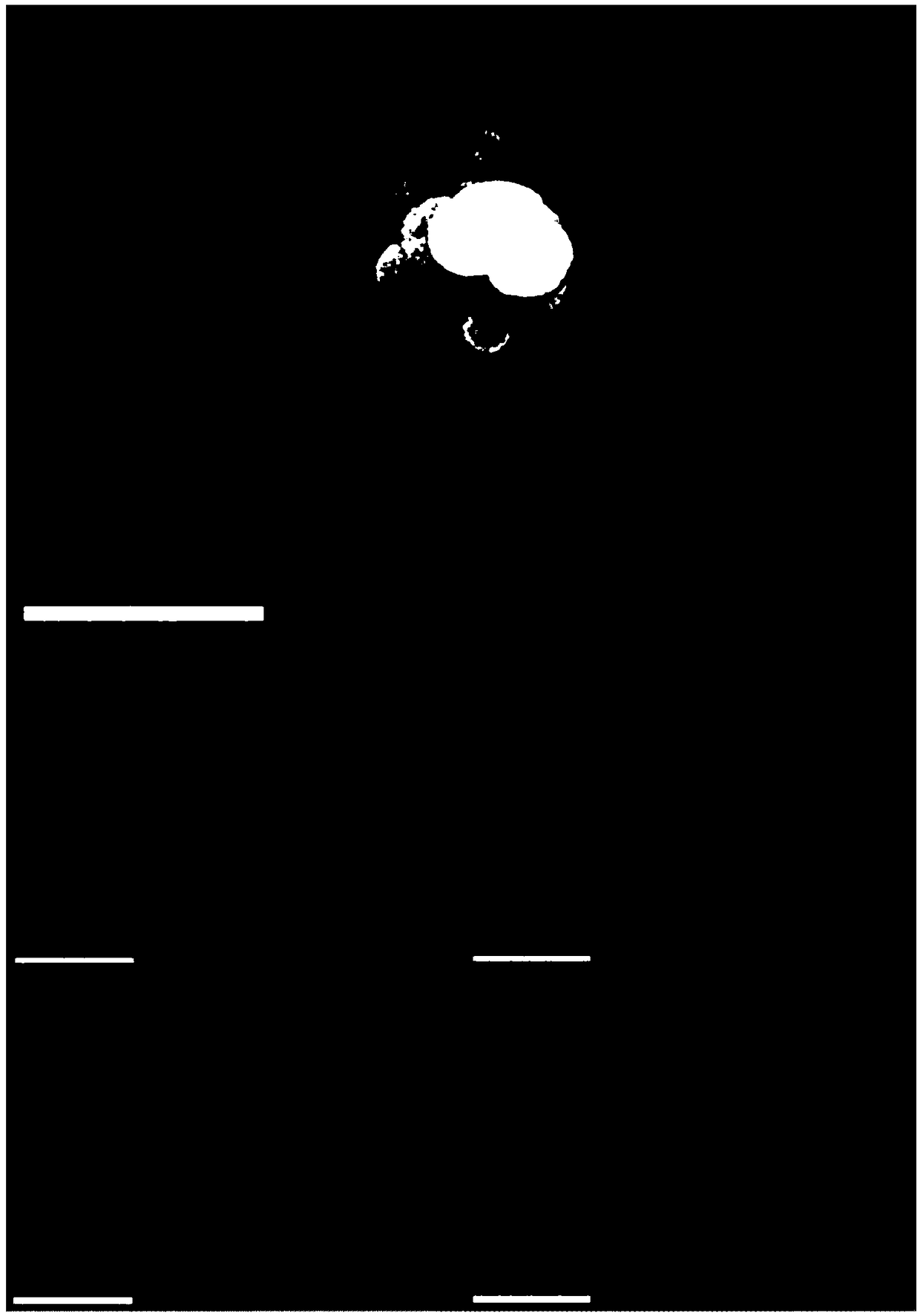Nano composite material as well as preparation method and application thereof
A nanocomposite material and metal nanotechnology, which is applied in the field of zinc secondary battery negative electrode materials and its preparation, can solve the problems of uneven modification and easy falling off, and achieve low cost, ensure uniformity, and improve the effect of hydrogen evolution overpotential
- Summary
- Abstract
- Description
- Claims
- Application Information
AI Technical Summary
Problems solved by technology
Method used
Image
Examples
Embodiment 1
[0048] (1) Weigh 2.5g of zinc acetate powder and 100mgBi(NO 3 ) 3 ·5H 2 O was added to 50ml of ethylene glycol solution, stirred for 1h to fully dissolve the two, and then 1g of glucose was added to the mixed solution as a reducing agent to obtain a transparent mixed solution.
[0049] (2) Pour the obtained transparent mixed solution into a hydrothermal kettle, place it in a high-temperature oven and adjust the heating rate to 10°C / min, and after hydroheating at a temperature of 150°C for 3 hours, use water cooling to rapidly reduce it to room temperature.
[0050] (3) Filter and separate the obtained hydrothermal product to obtain a brown precursor powder, then put the precursor into 100ml of ethanol and sonicate for 10 minutes, repeatedly wash and filter three times, and then put the precursor in an oven to dry for 8 hours stand-by.
[0051] (4) Finally, put the obtained precursor powder into a high-temperature resistance furnace, maintain a heating rate of 3° C. / min, an...
Embodiment 2
[0057] (1) Weigh 4g of zinc acetate powder and 400mg of In(NO 3 ) 3 Add it to 70ml of glycerol solution, stir for 1.5h to fully dissolve the two, and then add 1.3g of fructose as a reducing agent to the mixed solution to obtain a transparent mixed solution.
[0058] (2) Pour the obtained transparent mixed solution into a hydrothermal kettle, place it in a high-temperature oven and adjust the heating rate to 14°C / min, and after hydroheating at a temperature of 160°C for 5 hours, use water cooling to rapidly reduce it to room temperature.
[0059] (3) Filter and separate the obtained hydrothermal product to obtain brown precursor powder, then put the precursor into 100ml of deionized water and ultrasonic for 15min, wash and filter three times repeatedly, then put the precursor into an oven to dry for 10h stand-by.
[0060] (4) Finally, put the obtained precursor powder into a high-temperature resistance furnace, maintain a heating rate of 5° C. / min, and calcinate at 600° C. f...
Embodiment 3
[0066] (1) Weigh 4.5g of zinc acetate powder and 500mg of SnCl in proportion 2 2H 2 O was added to 50ml of ethylene glycol solution, stirred for 2h to fully dissolve the two, and then 1g of glucose was added to the mixed solution as a reducing agent to obtain a transparent mixed solution.
[0067] (2) Pour the obtained transparent mixed solution into a hydrothermal kettle, place it in a high-temperature oven and adjust the heating rate to 18°C / min, and after 7 hours of hydroheating at a temperature of 180°C, use water cooling to rapidly reduce it to room temperature.
[0068] (3) Filter and separate the obtained hydrothermal product to obtain a brown precursor powder, then put the precursor into 100ml of methanol and ultrasonicate for 20min, wash and filter three times repeatedly, and then put the precursor into an oven to dry for 10h stand-by.
[0069] (4) Finally, put the obtained precursor powder into a high-temperature resistance furnace, maintain a heating rate of 8° C...
PUM
| Property | Measurement | Unit |
|---|---|---|
| Particle size | aaaaa | aaaaa |
| Particle size | aaaaa | aaaaa |
| Particle size | aaaaa | aaaaa |
Abstract
Description
Claims
Application Information
 Login to View More
Login to View More - R&D Engineer
- R&D Manager
- IP Professional
- Industry Leading Data Capabilities
- Powerful AI technology
- Patent DNA Extraction
Browse by: Latest US Patents, China's latest patents, Technical Efficacy Thesaurus, Application Domain, Technology Topic, Popular Technical Reports.
© 2024 PatSnap. All rights reserved.Legal|Privacy policy|Modern Slavery Act Transparency Statement|Sitemap|About US| Contact US: help@patsnap.com










